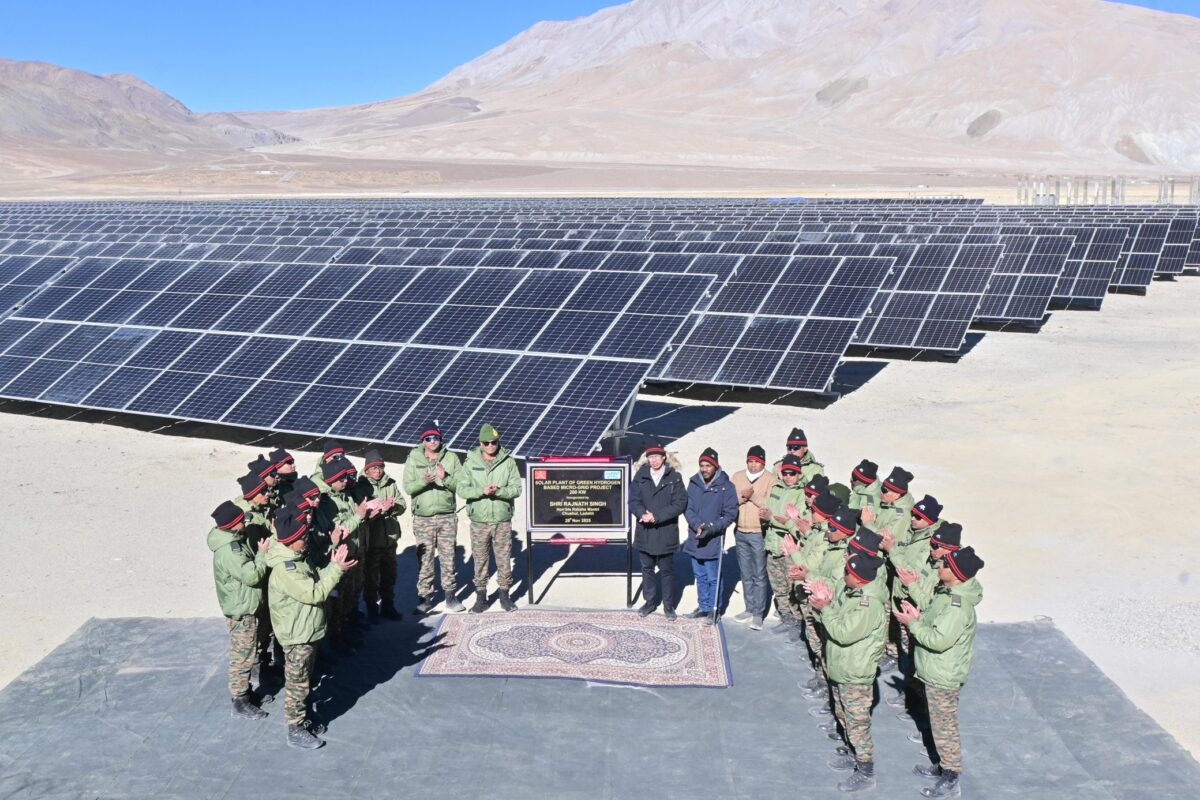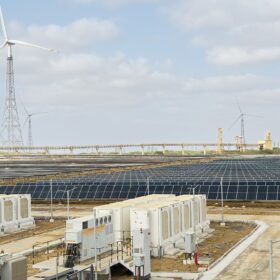Defence Minister Rajnath Singh virtually inaugurated NTPC’s 3.7 MW solar plant, a component of the solar–hydrogen-battery energy storage system (BESS) based microgrid project at Chushul, Ladakh, India, developed jointly by NTPC and the Indian Army. The microgrid system includes a 3.7 MW solar PV plant for the supply of power to the 200kW load and hydrogen generation, a hydrogen generation system (PEM electrolyser), hydrogen storage, BESS to supply continuous power for limited time and to cater for emergency operation, and a fuel cell system for generating 200 kW of electrical power.
NTPC stated that the project was commissioned in a record eight months’ time despite the challenging and high-altitude terrain.
The solar–hydrogen-based microgrid will replace diesel generator sets currently used at remote Army locations, reducing carbon emissions and supporting a cleaner and more reliable energy system for the region. By enabling local production and utilisation of green energy, the project will eliminate the need for fuel transportation from the plains, enhancing energy security and reducing logistical challenges. Every three units of power generated will avoid carrying one litre of diesel to these remote Himalayan posts.
“NTPC has designed a stand-alone microgrid using hydrogen as the storage medium to supply 200 kW of power at any time of the day, throughout the year. Located at an altitude of 4,500 metres with winter temperatures dipping to –40°C, this is the world’s most unique project of its kind,” stated NTPC. “Once fully operational, it is expected to mark a major step towards decarbonising the defence sector in high-altitude regions.”
This content is protected by copyright and may not be reused. If you want to cooperate with us and would like to reuse some of our content, please contact: editors@pv-magazine.com.









By submitting this form you agree to pv magazine using your data for the purposes of publishing your comment.
Your personal data will only be disclosed or otherwise transmitted to third parties for the purposes of spam filtering or if this is necessary for technical maintenance of the website. Any other transfer to third parties will not take place unless this is justified on the basis of applicable data protection regulations or if pv magazine is legally obliged to do so.
You may revoke this consent at any time with effect for the future, in which case your personal data will be deleted immediately. Otherwise, your data will be deleted if pv magazine has processed your request or the purpose of data storage is fulfilled.
Further information on data privacy can be found in our Data Protection Policy.